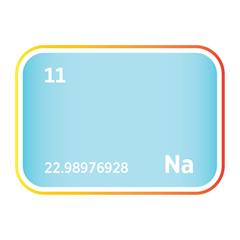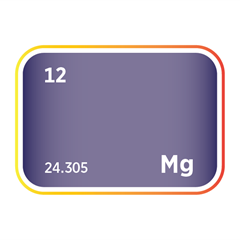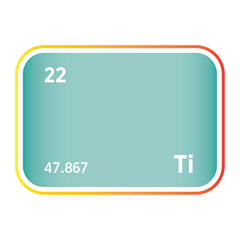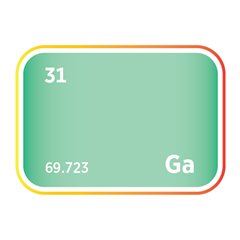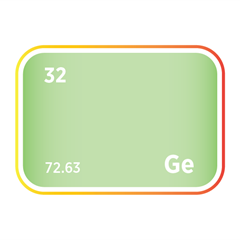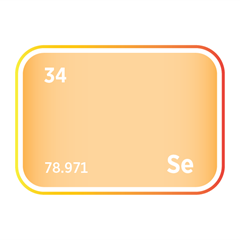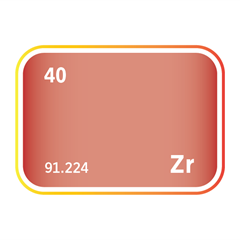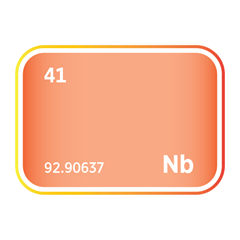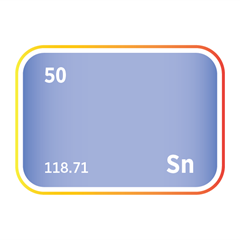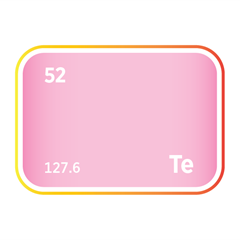Sulfur
Critical Minerals and The Energy Transition
Navigating the Sulfur Market
Sulfur, a fundamental element in the global economy, is crucial across diverse industries, from agriculture to energy. Predominantly used in the production of sulfuric acid, sulfur is a critical ingredient in fertilisers, contributing significantly to the agricultural sector's productivity and global food security. Its importance extends to the petroleum industry, where it is involved in refining processes and producing cleaner fuels, aligning with the worldwide shift towards environmental sustainability. Additionally, sulfur finds applications in the chemical manufacturing of products ranging from pharmaceuticals to rubber. The demand for sulfur is driven by its essential applications, yet it is also influenced by environmental considerations, particularly its role in reducing emissions and supporting cleaner industrial processes. However, the sulfur market faces challenges, including fluctuating prices and the need for sustainable mining and recovery methods. As the world moves towards greener technologies and energy efficiency, the sulfur industry is at the forefront of innovation, striving to meet the dual demands of economic growth and environmental preservation.
An introduction to sulfur
Sulfur demand and end-uses
Sulfur is an abundant non-metallic element with widespread applications across agriculture, chemicals, refining, metallurgy, and environmental management. Though often associated with its pungent odour in raw form, sulfur is a vital industrial input, particularly in the form of sulfuric acid, one of the most widely produced and consumed chemicals globally. Its low cost, versatility, and reactivity underpin a wide range of essential products and processes, which are fundamental to modern economies.
The dominant use of sulfur is in the production of sulfuric acid, which accounts for the vast majority of global sulfur consumption. Sulfuric acid is a cornerstone of the fertiliser industry, used primarily to produce phosphate fertilisers such as monoammonium phosphate (MAP) and diammonium phosphate (DAP), which are critical for global agricultural productivity. This link to food security ensures that sulfur demand is closely tied to population growth, agricultural intensification, and seasonal planting cycles, particularly in emerging economies.
In the chemical industry, sulfuric acid is used in a wide array of manufacturing processes. It is essential to the production of synthetic detergents, pigments, dyes, explosives, and pharmaceutical ingredients. Sulfur compounds also play a role in making synthetic rubbers and in the processing of metals such as copper, nickel, and uranium, where sulfuric acid is used in leaching and separation.
Sulfur has an important role in the refining sector, where it is removed from crude oil and natural gas during desulfurisation to reduce emissions of sulfur oxides (SOₓ), which contribute to acid rain and air pollution. The sulfur recovered during these processes, often referred to as recovered or elemental sulfur, is then used as feedstock for other industries. This makes petroleum refining and natural gas processing the primary sources of sulfur supply globally, rather than mining from sulfur deposits.
In metallurgy, sulfur is used in the form of sulfur dioxide and sulfuric acid in ore beneficiation and metal extraction, particularly in the production of zinc, copper, and rare earth elements. It is also used in the vulcanisation of rubber, where it strengthens material elasticity and heat resistance, supporting automotive and industrial rubber goods.
The construction and mining sectors use sulfur compounds in blasting agents and concrete additives, while paper and pulp manufacturing use sulfur-based chemicals in the Kraft process to separate lignin from cellulose. Sulfur is also present in water treatment chemicals and industrial cleaning agents, where its reactivity enables pH control, disinfection, and contaminant removal.
In agriculture, beyond fertiliser production, sulfur is used directly as a soil amendment and fungicide. Elemental sulfur and sulfur-based compounds help correct soil pH, manage fungal diseases in crops, and supply essential micronutrients to plants. As organic and regenerative farming practices grow in popularity, sulfur is expected to remain a preferred input due to its natural origin and efficacy.
Sulfur also plays a role in battery technologies. Research into lithium–sulfur (Li–S) batteries, which promise high energy density and low cost, has intensified in recent years. While Li–S batteries are still in development and face challenges around cycle life and stability, their use of sulfur, an abundant and inexpensive material, makes them a promising candidate for future energy storage solutions.
Looking forward, sulfur demand is expected to remain stable in fertilisers and chemicals, with incremental growth in speciality areas such as energy storage, environmental remediation, and green metallurgy. However, sulfur’s dependence on fossil fuel refining poses long-term supply risks in a decarbonising world. Ensuring stable availability may require greater focus on alternative sulfur recovery methods and circular economy approaches, including sulfur recycling from industrial waste streams.
As an enabler of global agriculture, industrial chemistry, and pollution control, sulfur continues to serve as a backbone of foundational industries. Its future will be shaped by its adaptability to cleaner processes, its potential in low-carbon technologies, and its continued role in supporting food systems and infrastructure worldwide.

Sulfur supply
Sulfur supply is overwhelmingly dependent on by-product recovery, primarily from desulphurising crude oil and natural gas in petroleum refineries and gas-processing plants. This “recovered sulfur” accounts for over 90% of global supply, making it deeply tied to fossil fuel production and the configuration of global energy systems. The United States, Russia, Canada, China, and Saudi Arabia dominate supply due to their extensive hydrocarbon industries and sulphur recovery infrastructure. Claus units and tail gas treatment processes in these facilities extract elemental sulfur as a waste mitigation measure, transforming a pollutant into a commercially valuable material.
A smaller but still relevant share of sulfur comes from mining sulfur-bearing minerals such as pyrite (FeS₂) and gypsum (CaSO₄·2H₂O), particularly in China, India, Mexico, and Poland, where direct mining supports domestic chemical and fertiliser sectors. However, this route is less common globally due to higher costs, lower purity, and environmental concerns.
The sulfur market faces increasing supply-side risks from the energy transition. As countries decarbonise and shift away from oil and gas, refinery closures, reduced fossil fuel throughput, and a decline in upstream sour gas processing could significantly reduce recovered sulfur output. This would disrupt supply chains reliant on cheap, steady sulfur availability, particularly for sulphuric acid production, which underpins phosphate fertiliser, metal leaching for battery minerals, and chemical manufacturing.
At the same time, sulfur demand is expected to rise. Sulphuric acid is essential for hydrometallurgical extraction of lithium, nickel, cobalt, and rare earths, especially in high-pressure acid leaching (HPAL) and other low-carbon refining methods. It is also increasingly relevant in producing advanced batteries, including lithium–sulfur technologies, and sulfur-based polymers. This creates a paradox: sulfur supply risks contracting just as demand intensifies in strategic, low-carbon sectors.
Geopolitical tensions, including sanctions on Russia, shipping disruptions, and energy price shocks, have also highlighted the vulnerability of sulfur supply chains. Because sulfur is often treated as a secondary commodity, market transparency is poor, with limited public data on inventories, contracts, or trade flows. This opacity hampers risk assessment and investment planning in sulfur-dependent sectors.
Environmental and ESG pressures further shape the landscape. Sulfur recovery reduces sulfur dioxide (SO₂) emissions, a major contributor to acid rain and respiratory health issues, making it a regulatory requirement in many jurisdictions. However, carbon-intensive refining is under growing scrutiny, and shifts toward clean fuels or electrification could undermine sulfur recovery economics. In parallel, concerns over sulfur waste management, acidic tailings, and air pollution around mining and refining sites add complexity to permitting and public acceptance.
Circular economy approaches offer emerging but underdeveloped supply pathways, including acid recovery from industrial processes, scrubbing of flue gases, and recycling of sulfuric acid from battery and e-waste processing. These could mitigate some risks, but investment and technology deployment remain limited.
In response to tightening dynamics, some countries are beginning to factor sulfur into critical raw material strategies, particularly those with large fertiliser sectors or ambitions to lead in battery and clean technology manufacturing. Strategic stockpiling, supply chain audits, and public–private partnerships for sulfur recovery optimisation may become more common as sulfur transitions from an overlooked by-product to a strategically important input.
Sulfur substitution
Substituting sulfur is complex due to its unique chemical and industrial properties, especially in producing sulfuric acid, one of the most widely used industrial chemicals globally. It is essential for fertiliser manufacturing, metal leaching, petroleum refining, chemical synthesis, and wastewater treatment. However, in specific applications, there are limited pathways for substitution or reduction, though none fully replicate sulfur’s scale or versatility.
Substitution is minimal in phosphate fertiliser production, where sulfuric acid is used to convert phosphate rock into phosphoric acid. Some alternatives, such as nitric acid in nitrophosphate processes, exist but are more costly, less efficient, and less widely adopted. Similarly, sulfuric acid has proven indispensable in hydrometallurgical metal extraction, especially for nickel, cobalt, copper, and rare earths due to its reactivity, availability, and relatively low cost. Alternative leaching agents such as hydrochloric acid, nitric acid, or ammonia-based solvents may be used for specific ores or processing routes. Still, they carry different environmental risks, require specialised infrastructure, and are often costlier.
In chemical synthesis, sulfur-based reagents can sometimes be replaced by oxygen, chlorine, or phosphorus compounds, but these alternatives frequently alter the process chemistry and final product properties. For instance, sulfur dioxide used in bleaching can be replaced by hydrogen peroxide or ozone, but with trade-offs in cost and safety.
Elemental sulfur used in rubber vulcanisation and construction materials like sulfur concrete can sometimes be substituted with synthetic polymers or cementitious additives. Still, these alternatives may not match sulfur’s specific durability or temperature resistance. In agriculture, sulfur used as a soil amendment or fungicide has some organic or microbial substitutes (e.g., compost, copper-based fungicides). Still, their efficacy and environmental profiles vary by crop and region.
Emerging lithium–sulfur (Li–S) batteries use sulfur cathodes in battery technologies. Substitution here refers not to replacing sulfur, but rather to competing technologies, such as solid-state, lithium iron phosphate (LFP), or nickel-rich chemistries, which serve the same end-use (energy storage) without using sulfur. However, if Li–S batteries scale significantly, this could increase sulfur demand rather than reduce it.
While minor substitutions exist in niche areas, sulfur’s role in large-scale industrial ecosystems, particularly in sulfuric acid production, is irreplaceable. The most viable strategies for reducing sulfur dependency lie in improving efficiency, recovering sulfur from alternative industrial streams, and investing in circular recovery systems, rather than direct substitution.



Meet the Critical Minerals team
Trusted advice from a dedicated team of experts.

Henk de Hoop
Chief Executive Officer

Beresford Clarke
Managing Director: Technical & Research

Jamie Underwood
Principal Consultant

Dr Jenny Watts
Critical Minerals Technologies Expert

Ismet Soyocak
ESG & Critical Minerals Lead

Thomas Shann Mills
Senior Machine Learning Engineer

Rj Coetzee
Senior Market Analyst: Battery Materials and Technologies

Franklin Avery
Commodity Analyst

How can we help you?
SFA (Oxford) provides bespoke, independent intelligence on the strategic metal markets, specifically tailored to your needs. To find out more about what we can offer you, please contact us.



